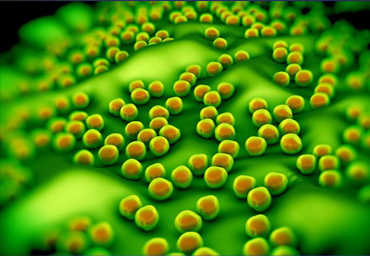Narrow wavelength of UV light kills MRSA without harming skin

Unlike standard germicidal UV lamps, far-UVC kills bacteria and viruses without damaging the skin or eyes.
NEW YORK, June 9 (UPI) -- Researchers have known for some time that ultraviolet light kills bacteria such as Methicillin-resistant Staphylococcus aureus, or MRSA, though a recent study found a UV wavelength that both kills bugs and is safe for human exposure, unlike standard germicidal UV light.
Researchers at Columbia University found a narrow wavelength of UV light, called far-UVC, kills bacteria but does not burn the skin, suggesting it as an effective method for preventing or treating surgical site infections caused by MRSA.
Surgical site infections double the mortality rate compared to patients who do not contract them, increasing healthcare costs by $3 billion to $10 billion dollars per year.
The same Columbia research team found in a 2013 study that far-UVC, a 207-nanometer wavelength of UV light, was as effective at killing MRSA as standard germicidal UV light, which can damage exposed skin.
The new study establishes the safety of far-UVC, researchers report, finding the narrow UV waves can't penetrate the outer layer of dead skin cells to reach live ones or the outer layer of the eye, but can penetrate bacteria and viruses, the researchers say.
"Our findings offer a potential practical pathway towards significantly reducing surgical site infection rates without risk to the health and safety of patients and medical personnel," Dr. David Brenner, a professor of radiation biophysics at the Center for Radiological Research at Columbia University, said in a press release.
For the study, published in the journal PLOS One, researchers exposed mice to 207-nanometer far-UVC or standard 254-nanometer UV germicidal lamps, as well as a sham irradiation as a control group. The mice were evaluated 48 hours after being exposed to the lights for epidermal hyperplasia, pre-mutagenic UV-associated DNA lesions, skin inflammation and normal cell proliferation and differentiation.
For mice exposed to germicidal lamps, researchers found significant effects for all skin damage endpoints they tracked, while mice exposed to far-UVC experienced skin effects considered not statisically distinguishable from the control mice.
Future research will test the use of UVC in surgical settings with larger animals and humans, with the hope it could help kill other airborne bacteria and viruses such as tuberculosis and influenza, Brenner said.
"What we showed in our earlier work is that far-UVC light is as effective at killing MRSA as conventional germicidal UV light -- and now with this new research, we have demonstrated that far-UVC kills bacteria but without risk of skin damage," Brenner said.
